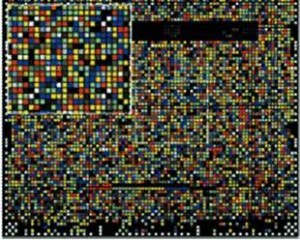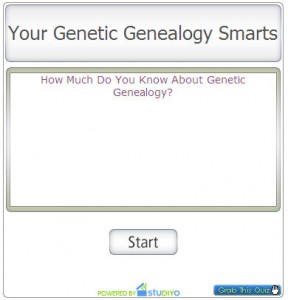 Although the genome scanning services offered by companies such as 23andMe, deCODEme, and SeqWright have been front and center in the press the last few weeks, I’m sure that the following information will not be included in any of the reports.
Although the genome scanning services offered by companies such as 23andMe, deCODEme, and SeqWright have been front and center in the press the last few weeks, I’m sure that the following information will not be included in any of the reports.
Comparisons
Two different sources have concluded that the scanning service offered by 23andMe and deCODEme, who use different types of Illumina SNP Chips, are highly reproducible. In January 2008, Ann Turner compared the results of testing at deCODEme and 23andMe, and concluded that of the 560,163 SNPs that overlapped and had a “call” (meaning there was a measurable result), they agreed on 560,128 and disagreed on 35. Ann wrote in January:
In all of [the disagreed calls], one company would make a homozygous call while the other company made a heterozygous call – there were no cases where they made a completely discordant call. All in all, I’d say that is pretty impressive.

 Around the year 1700, a relatively healthy young hunter was walking along a glacier in land that would one day be British Columbia in Canada. He wore a robe of 95 animal skins, perhaps gopher or squirrel, stitched together with sinew, and carried a walking stick, iron-blade knife, and spear thrower. For some reason, the young man, aged 17 to 22, died on the glacier and was quickly incorporated into the ice. There he remained, frozen, for the next 300 years.
Around the year 1700, a relatively healthy young hunter was walking along a glacier in land that would one day be British Columbia in Canada. He wore a robe of 95 animal skins, perhaps gopher or squirrel, stitched together with sinew, and carried a walking stick, iron-blade knife, and spear thrower. For some reason, the young man, aged 17 to 22, died on the glacier and was quickly incorporated into the ice. There he remained, frozen, for the next 300 years. Yesterday, a very interesting paper was published in the American Journal of Human Genetics by the Genographic Project Consortium entitled “
Yesterday, a very interesting paper was published in the American Journal of Human Genetics by the Genographic Project Consortium entitled “ On April 27, 2007, I wrote “
On April 27, 2007, I wrote “